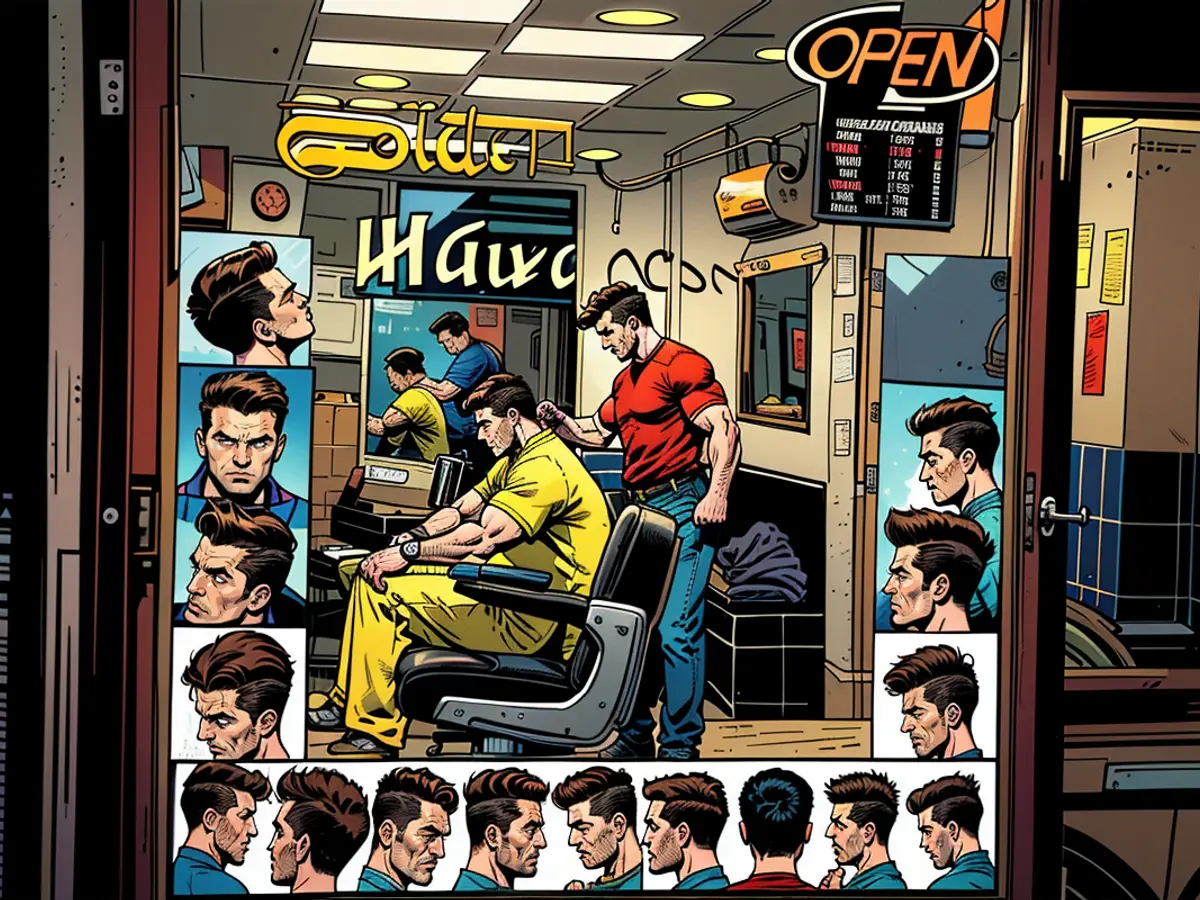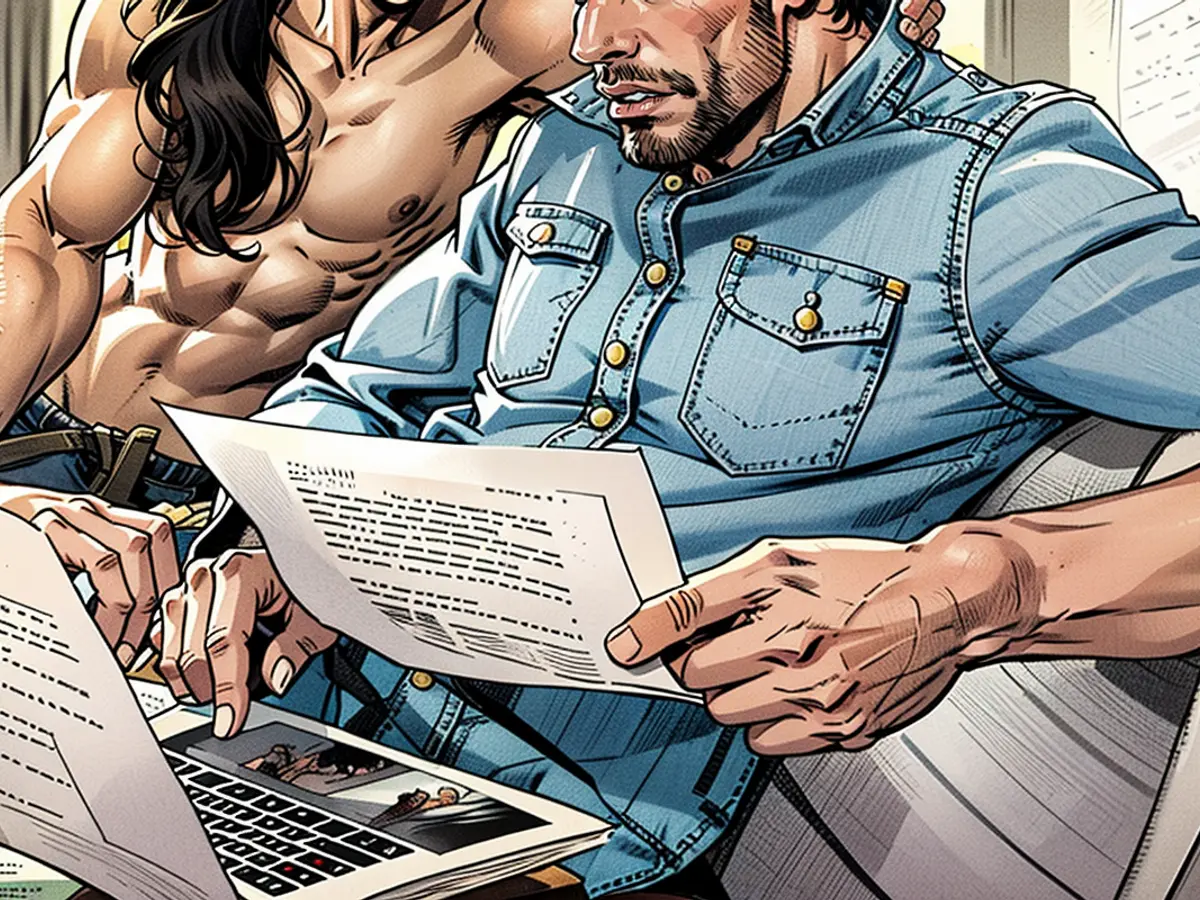Why do women’s haircuts cost more than men’s?
But are women really paying more for the same service? Can any differences in price be justified? Or is this another example of a “pink tax,” where products and services targeted at women cost more than those targeted at men for no discernible reason?
The available data certainly lends credence to many women’s frustrations.
Last year, the average cost for a standard women’s haircut was $51.71 compared with $34.56 for a men’s haircut across the United States, according to transaction data provided exclusively to CNN by Square, a payment systems provider. The cheapest women’s haircut could be found in South Dakota for $31.43 — almost one and a half times more than the $21.59 paid by men for their cheapest haircut, also in that state.
Across the pond, the data is also pretty, ahem, clear-cut.
In 2020, a survey of UK consumers by YouGov found that women paid an average of £31.99 ($40.80) for a basic haircut, which may include a wash and blow dry. That’s more than twice the average £12.17 (£15.50) paid by men for the same or similar service.
Over the course of a year, women typically pay £135 ($172) for haircuts, while the average man spends £70 ($89), according to YouGov’s calculations. “While women tend to get their hair cut less frequently, this is still not enough to offset the difference in prices paid,” Matthew Smith, head of data journalism at YouGov, wrote at the time.

Still, much like a keratin-conditioned two-tone balayage: it’s complicated.
There are a potentially infinite number of haircuts, colorings and treatments offered by scores of hair salons and barbershops. And these businesses employ people with varying levels of skill and training to work on customers with a huge range of hair textures and lengths.
There is also huge variation in the type of experience customers seek, according to Fred Jones, legal counsel at the Professional Beauty Federation of California, a trade body which, since the pandemic, has expanded to represent haircare businesses and workers across all states.
“You have the high-end (service) where it’s a half-day experience and there’s champagne, bubbly, all the way down to just ‘give me a quick cut, I’m in here for 15 minutes then I’m gone,” he told CNN.
That heterogeneity makes it “really difficult to tease out” whether women are paying higher prices simply because of their gender, said Jones.
“Nobody has an interest in our industry to discriminate... if the reputation gets out that your salon discriminates on any basis, it’s going to hurt your bottom line,” he added.
A layered problem
Tara Farmer, an editor at Fash, a site connecting consumers with local businesses across the US, cites differences in the typical hair length as a major reason pushing prices for women higher than those for men.
“Women’s haircuts typically take more time than men’s cuts and often involve working with longer hair and using additional styling products, tools, and techniques,” Farmer wrote in a January report into the issue.
That report found the average cost of a women’s haircut ranging between $45 and $75 across the country, while men’s toggled between $25 and $50, though it did not specify whether the typical women’s haircut included extra services such as a blow dry.
Additional services such as coloring can easily push prices into triple digits. The average cost of balayage highlights — a natural-looking style of coloring that concentrates the dye toward the tips — was $175 in 2022, according to Fash data.

Caroline Larissey, chief executive of the National Hair & Beauty Federation (NHBF), a UK trade body, told CNN that women are more likely than men to ask for such additional services. “Ladies generally have shampoo, condition, treatment as well as a cut and blow dry, whereas gents that go into a barbers will often have a dry haircut,” she said.
Even so, in general, women are still being charged about two-and-a-half times more than men for an equivalent haircut, according to Larissey. Yet there are “pockets” of the industry that have started charging customers based on time spent in the chair, she added, rather than delineating by gender — a move the NHBF has actively encouraged.
“We have to adapt as an industry,” Larissey said.
‘Stale and old-fashioned’
Kristin Rankin, a hairstylist based in New York City, thinks we should scrap gender-based pricing entirely. “When you go to cosmetology school to become a hair stylist, you learn to how to cut hair,” they told CNN. “This fallacy of learning how to cut men’s hair (versus) women’s hair is ridiculous.”
In 2016, Rankin founded the Dresscode Project, a non-profit that trains hairstylists and hair salon owners to create environments that affirm people’s gender identity, which, in many cases, will not fit into the binary categories of “man” or “woman.”
Two ways to do that, they said, is to charge clients based on the length of their hair, or the time it takes to cut. “(Gender-based pricing) creates an atmosphere where it makes it much easier to misgender people” which can have “a huge psychological impact,” Rankin added.
Goldie x Bob is one such hair salon that, five years ago, threwout its gender-based price list. Now, “the client is paying for the time and the expertise, and it has nothing to do with gender,” said Liz Burns, founder of the Denver-based salon.
Cuts for short hair are automatically booked for an hour, “but if it only takes 30 minutes, then (the client) only pays for 30 minutes. There’s no flat rate,” Ashlie Heath, the salon’s manager, told CNN.
Before the switch, Goldie x Bob charged men with short hair an average of $60 for a basic wash and haircut. Women were typically charged $85 for a similar service.
The difference, Burns told CNN, was explained by the fact that her female clients typically had longer hair that required blow drying and took more time to style. Clients with hair sitting close to the head — which are most often men — need less styling and usually don’t mind leaving it to dry naturally, she said.
But “it felt stale and old-fashioned to keep going in that direction,” said Burns, adding that the move to gender-neutral pricing was an attempt to “promote inclusivity and fairness.” She has noticed an uptick in the number of men and non-binary customers visiting the salon since the switch, she said.
Rankin, at the Dresscode Project, would surely approve. “Hair has no gender at all,” they said. “It is literally dead cells on the top of your head.”
The text discusses the issue of women paying more for haircuts and services than men, often referred to as the "pink tax." According to the data, the average cost for a standard women's haircut was $51.71 in the United States, while a men's haircut was $34.56. This trend is also observed in the UK, with women paying an average of £31.99 for a basic haircut, which is more than twice the average £12.17 paid by men. Even the cheapest haircuts for women were more expensive than those for men.
Two sentences that could follow from this text are:
The reasons for this price difference are complex and multifaceted, with factors such as perceived longer haircut times, the use of more styling products for women's hair, and the inclusion of additional services like blow-drying in women's haircuts often cited as potential causes.
Despite these factors, many argue that the price difference between women's and men's haircuts is unjustified and represents yet another example of the "pink tax," a term used to describe the phenomenon of women paying more for products and services that are marketed towards them without any discernible reason for the price difference.







